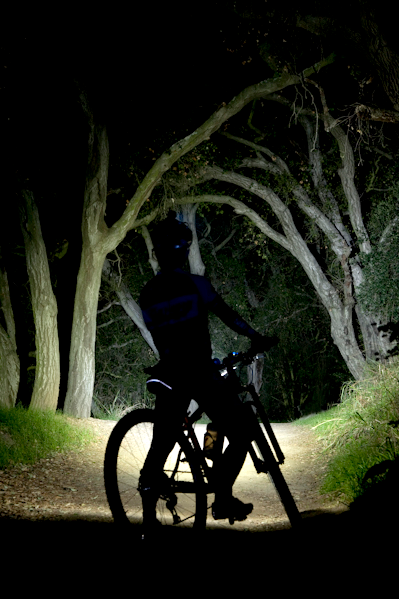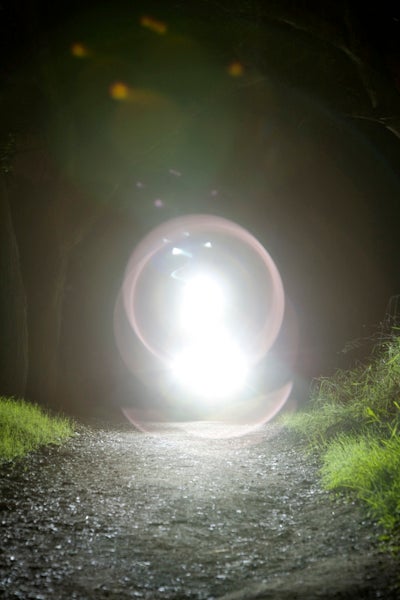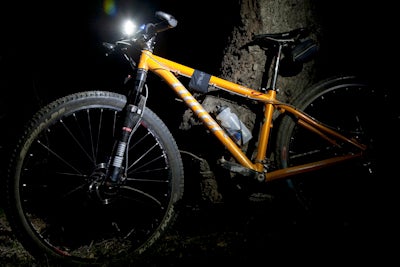
My racing partner and I, Mario Correa, placed second at the 24 Hours of Moab this year. It was a tough course–the first six miles served up some rocky terrain, so it was game on right away. Because we were going to do a lot of night laps, I went in search of one of the best lighting systems out there. The winner: . We ran the Betty lights on our bars and the Tesla and Wilma on our helmets. We specifically wanted the lights to avoid these common problems during a 24-hour race:
1. Support gets batteries confused: All batteries are interchangeable with Lupine lighting systems.
2. Batteries run out of charge: Lupine batteries can last quite sometime, depending on your power output. Plus, it has a reserve tank.
3. Mounting systems fail or slide around: Lupine lights have two sizes of rubber o-rings that curl around your bars.
4. Light output isn't strong enough: These puppies put a Hollywood movie set to shame.
Bottom line: Lupine is a quality system across the board.
After the race, Mario and I talked about our experience with the lights. Mario mounted his battery on his stem (it was long enough for that). I mounted mine on my top tube. The case shuts with Velcro, and there's the added security of a plastic clasp. Both our set ups were bomber. We pre-rode the first four miles at night to check out our systems and then did the battery mount test. Mario's involved dropping his bike on both wheels from about four feet off the ground several times. The helmet mount was also solid, as this type of Velcro is sticky throughout. Read on for more details.
–Heidi Volpe
MC: I could also mount the small battery on my bar, right behind the head tube, or mount it on the bar, and it wouldn't compromise my steering. Thebattery is so light-weight and small. I like to keep my batteries off the carbon frames, so the carbon doesn't get compromised.

Tapered handle bars have presented a mounting problem in the past. What about with Lupine?
HV: We both have tapered bars, so we ran the larger o-ring mounts, which secure tightly and don't slide around. I found that with other lights, they would slide around, especially if the course was technical and you bounced around a lot.
Was the light beam cool or warm?
MC: Not as yellow as the NR, but not as cool as LM. More in between, neutral.
Brighter than the moon?
MC: Yes. All the nocturnal animals came out.
HV: I blinded the timing-table people a few times. I think they saw stars.
How was the light spread?
HV: Lupine sends out an even light output and spread, as opposed to the Light in Motion, where there is a concentrated beam. I found this a little difficult to get used to at first.
MC: The even light spread was perfect for me. I don't like looking at a concentrated source because, when I look away, I get the after image/glow spots.

Were you worried you were going to run out of power?
MC: No. NR has run out on me in three different solo races, and with LM, you just have to be careful and manage your batteries between laps. Lupine comes with a device that indicates how much power you have left, so you are aware of yourcharge before going out. It will also go on a reserve, so you can at least get back to your pit.
Was the light output easy to manage?
MC: Very. It had adjustable settings, but we ran the default settings, which were fine for a duo. The one drawback was the instructions. I think they need a get-started-fast users' guide. They don't tell you exact burn times because they have so many fancy settings it's difficult to give estimated times. Like most people, I rarely read manuals–but get ready for some reading for this one. Once you set it up, though, it'll work like a charm.